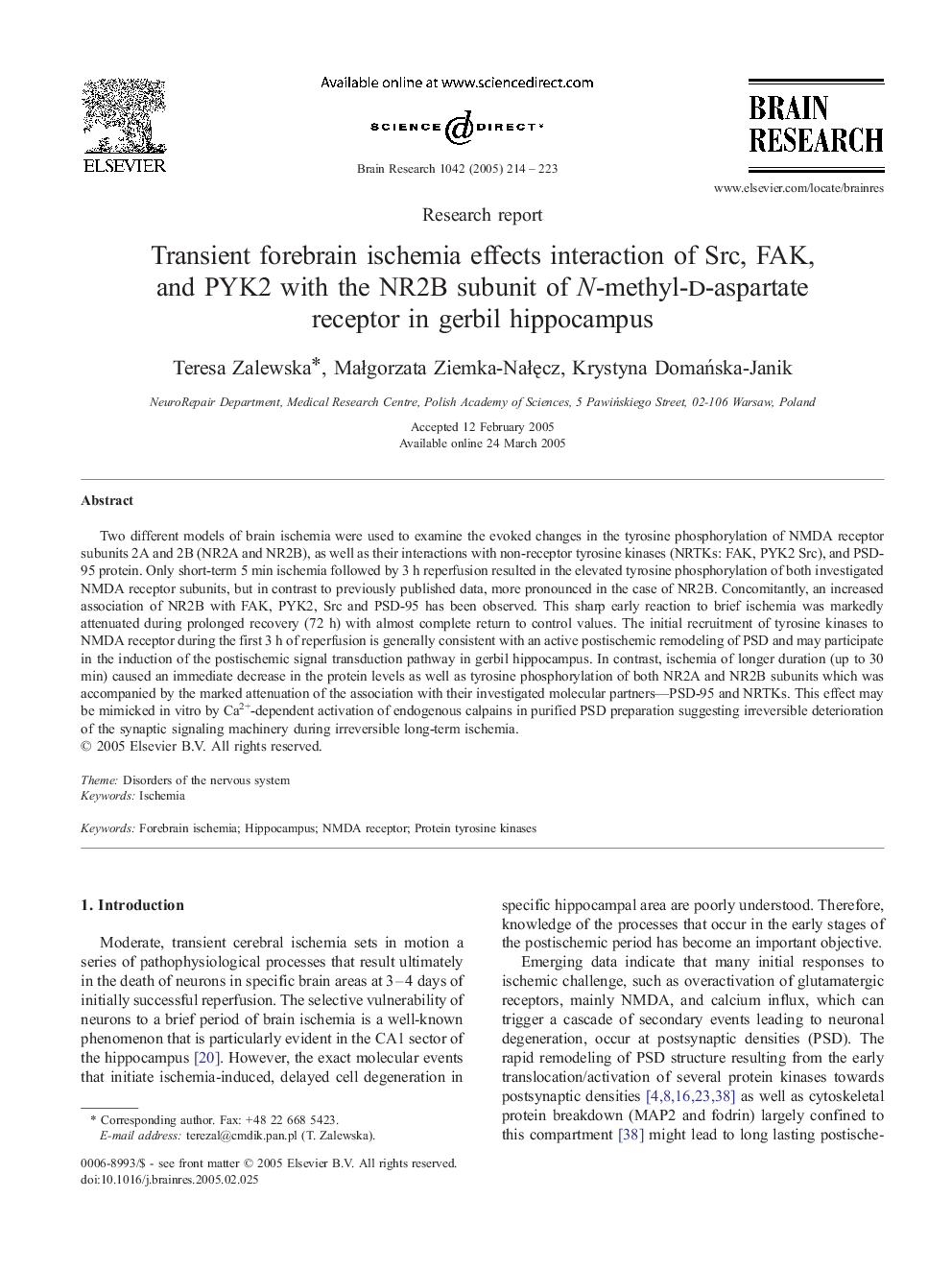| Article ID | Journal | Published Year | Pages | File Type |
|---|---|---|---|---|
| 9416510 | Brain Research | 2005 | 10 Pages |
Abstract
Two different models of brain ischemia were used to examine the evoked changes in the tyrosine phosphorylation of NMDA receptor subunits 2A and 2B (NR2A and NR2B), as well as their interactions with non-receptor tyrosine kinases (NRTKs: FAK, PYK2 Src), and PSD-95 protein. Only short-term 5 min ischemia followed by 3 h reperfusion resulted in the elevated tyrosine phosphorylation of both investigated NMDA receptor subunits, but in contrast to previously published data, more pronounced in the case of NR2B. Concomitantly, an increased association of NR2B with FAK, PYK2, Src and PSD-95 has been observed. This sharp early reaction to brief ischemia was markedly attenuated during prolonged recovery (72 h) with almost complete return to control values. The initial recruitment of tyrosine kinases to NMDA receptor during the first 3 h of reperfusion is generally consistent with an active postischemic remodeling of PSD and may participate in the induction of the postischemic signal transduction pathway in gerbil hippocampus. In contrast, ischemia of longer duration (up to 30 min) caused an immediate decrease in the protein levels as well as tyrosine phosphorylation of both NR2A and NR2B subunits which was accompanied by the marked attenuation of the association with their investigated molecular partners-PSD-95 and NRTKs. This effect may be mimicked in vitro by Ca2+-dependent activation of endogenous calpains in purified PSD preparation suggesting irreversible deterioration of the synaptic signaling machinery during irreversible long-term ischemia.
Keywords
Related Topics
Life Sciences
Neuroscience
Neuroscience (General)
Authors
Teresa Zalewska, MaÅgorzata Ziemka-NaÅÄcz, Krystyna DomaÅska-Janik,
